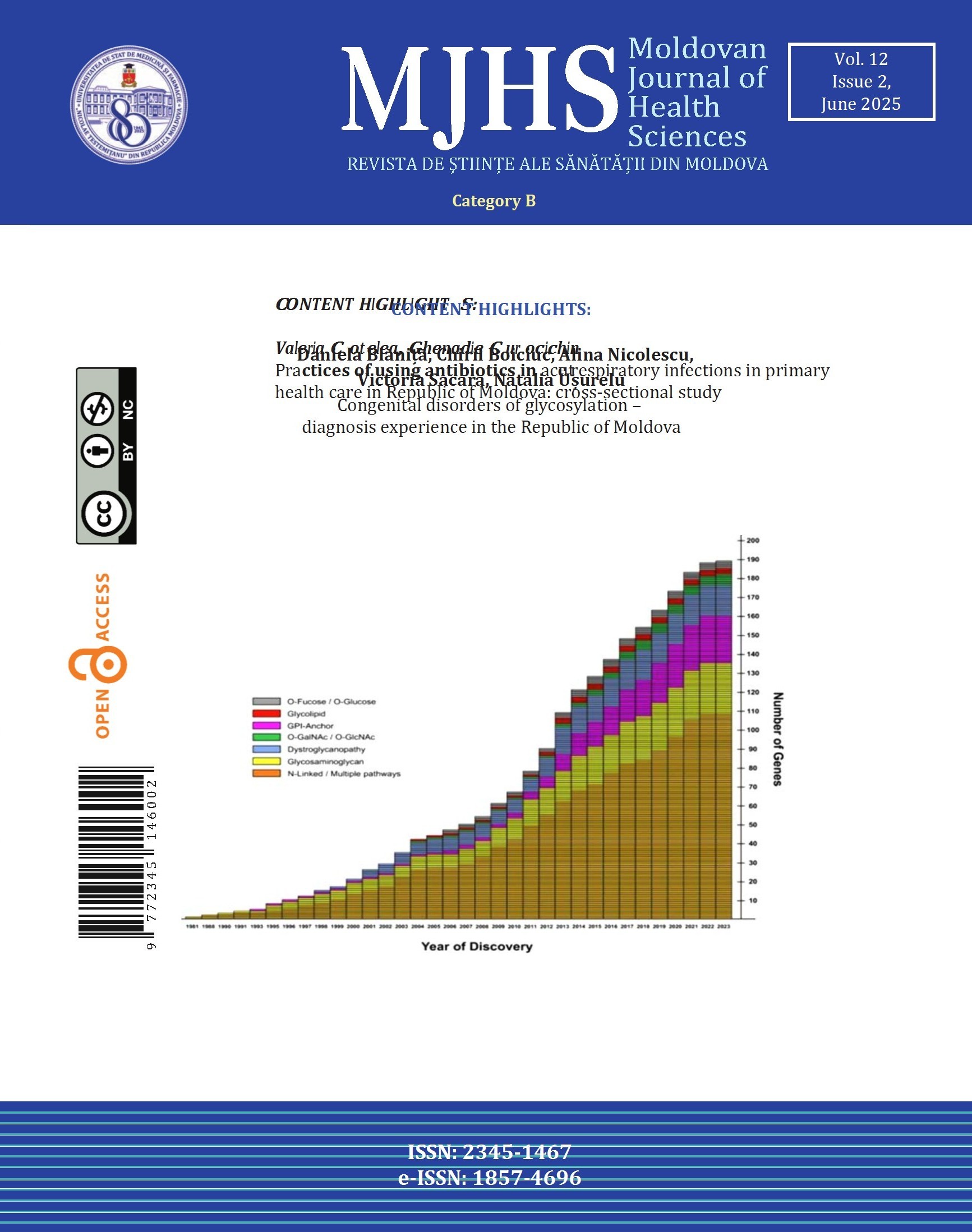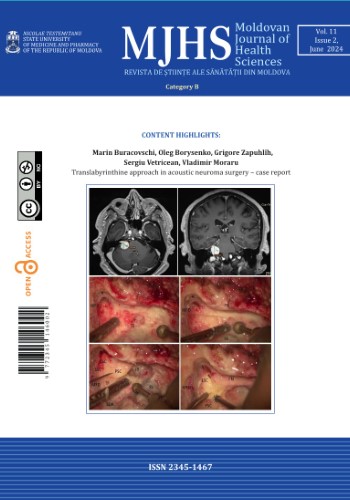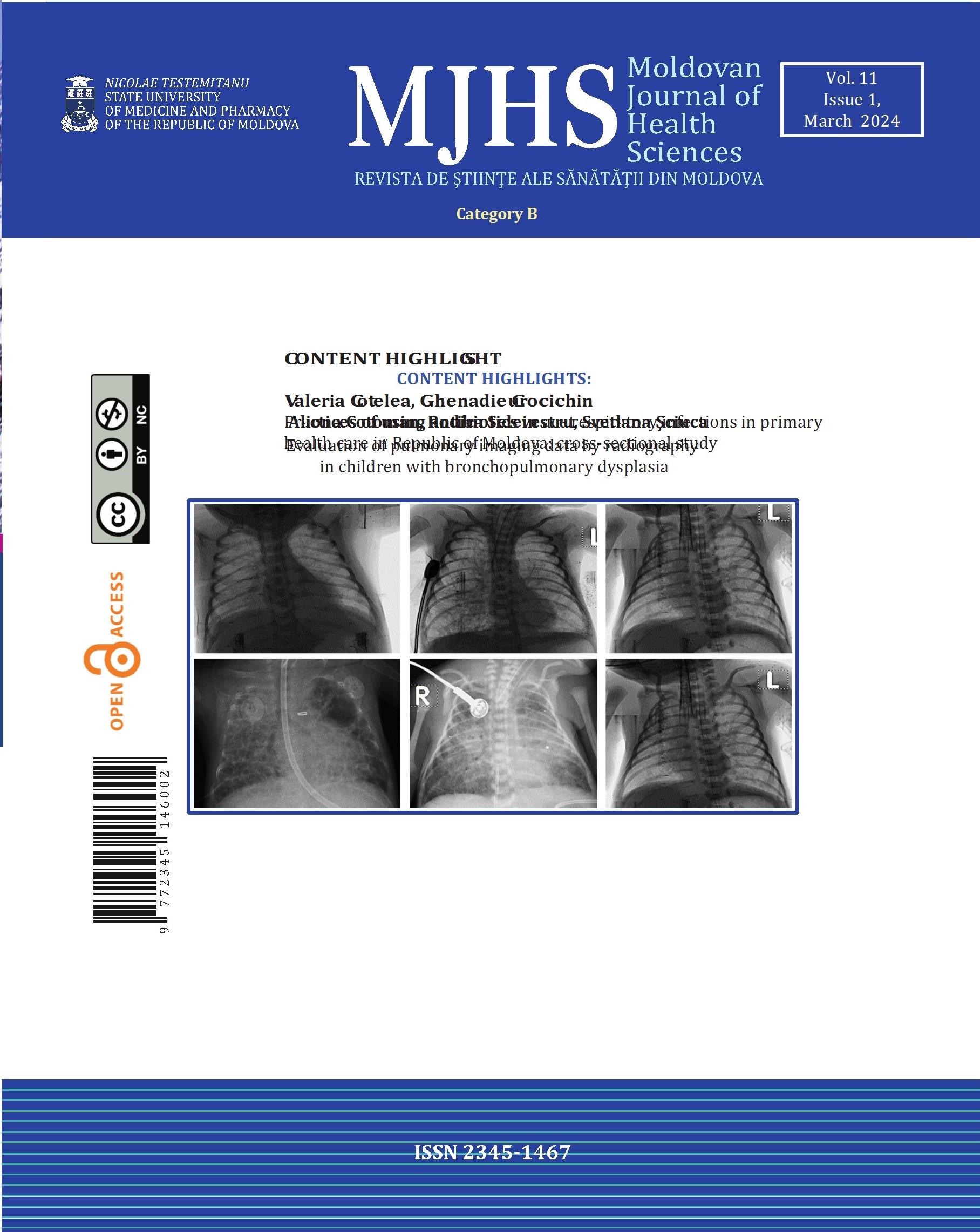Harmfulness of prooxidants in bronchopulmonary dysplasia in preterm children
https://doi.org/10.52645/MJHS.2023.3.01
Introduction
Oxidative stress can be defined as the imbalance of the redox state of a certain system including living one (organelle, cell, organ/tissue), which excessively produces reactive oxygen and/or reactive nitrogen species (ROS/RNS) that exceed the capacity of the antioxidant defense system, which have the ability to slow down or even prevent the oxidative damage of macromolecules. Oxidative stress is a pathogenic mechanism of a large variety of diseases, including pulmonary one.
Material and methods
81 preterm born children included in the study were divided into the main group – preterm children with bronchopulmonary dysplasia (BPD), and the control group – preterm children without BPD. The comparison groups were prospectively evaluated clinical, instrumental and laboratory (TPA, prooxidant-antioxidant balance, nitric oxide metabolistes and MDA). Data were statistically analyzed using Microsoft Excel, MedCalc and SPSS and Contingency Table Analysis as a way to evaluate the performance of a diagnostic test.
Results
In preterm children with BPD were found to be decreased by 29% (p < 0.001) the prooxidant-antioxidant balance (PAB) and the nitric oxide metabolistes (NO) level by 12% (p < 0.001) compared to children in the control group. The assessment of tissue oxidative damage markers revealed a significant 62% (p < 0.001) increase in malonic dialdehyde (MDA) content and a 4.86-fold (p < 0.001) increase in total prooxidant activity (TPA) in children with bronchopulmonary dysplasia compared to children in the control group. Our study confirms that TPA, PAB, MDA and NO values are reliable markers of hypoxic tissue damage at children with bronchopulmonary dysplasia and can be recommended for assessing the intensity of oxidative stress.
Conclusions
Pulmonary bronchodysplasia is characterized by the imbalance of prooxidant-antioxidant processes with the exacerbation of prooxidant ones that trigger the oxidative/nitrosative stress and the deterioration of vital chemical compounds.






